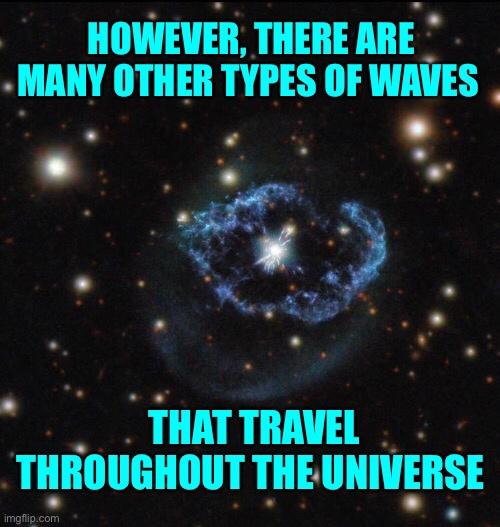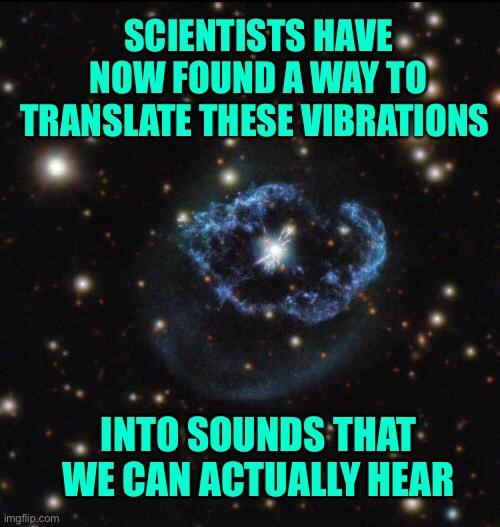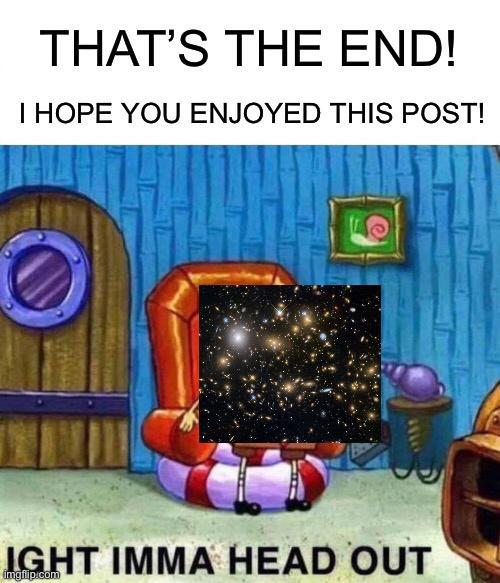
This is long, as I wanted to add more information into the science behind these sounds. Scientists have been releasing videos of their space data that they have “sonified,” or translated into sound that we can hear.
.
I managed to find a few clips of space sounds released by NASA and the LIGO Lab Caltech : MIT.
.
There are four in total:
.
1.) Our sun
2.) Voyager 1’s interstellar data
3.) Two black holes merging
4.) This is a bonus clip of NASA‘s sonification of a Hubble image!
.
I would have included some planetary sounds, but I couldn’t find a whole set of the solar system from a reliable source. For that reason, I left it out.
.
Even still, I want share these other sounds with you, because it’s really cool!

I’m not a physicist. I am confident enough in my comprehension of this material to translate it into layperson’s terms. I included NASA’s caption in some of them. Each of the videos also has a link with the official explanation, so it’s easy to fact-check me for the other clips if I’m wrong.
.
But I couldn’t continue without a disclaimer that I’m no expert in the field.
It is misleading to say “this is what the universe sounds like!” Outer space doesn’t produce sound waves. It’s definitely, OFFICIALLY silent. That is scientific fact.
.
HOWEVER, outer space isn’t “empty,” either. There are all sorts of waves emitting from different celestial bodies (is that the right term)? It’s not just light.
.
While these waves aren’t sound, they ARE vibrations! Scientists are able to translate these vibrations INTO sound for us to hear.

Like I just said.
11635“Listening” to the Universe!NextOlivetheNerdGive Emerald6,840 Views•December 21•via iPhone


*I go into depth on gravitational waves later on in the post.

When I say “sound we can actually hear” I meant this:
.
When scientists first translate the data into sound, it’s not always within the range that a human can hear.
.
They sometimes have to make extra adjustments to the sound data to be in a range that humans can hear, hence, “sound we can actually hear.”
The sun was the only reliable sound I could find from our solar system, so it’s the only one I included.
.
.
Scientists achieved the sun audio by applying a specific and complicated formula to the magnetic waves that they received. Then they adjusted it so we it could be heard by human ears. NASA’s explanation is more thorough, but also a bit advanced. I’ll include it anyway:
.
.
NASA’S CAPTION: These are solar sounds generated from 40 days of the Solar and Heliospheric Observatory’s (SOHO) Michelson Doppler Imager (MDI) data and processed by A. Kosovichev. Read more & download audio: https://go.nasa.gov/2JR0wLL
.
The procedure he used for generating these sounds was the following. He started with doppler velocity data, averaged over the solar disk, so that only modes of low angular degree (l = 0, 1, 2) remained. Subsequent processing removed the spacecraft motion effects, instrument tuning, and some spurious points.
.
Then Kosovichev filtered the data at about 3 mHz to select clean sound waves (and not supergranulation and instrumental noise). Finally, he interpolated over the missing data and scaled the data (speeded it up a factor 42,000 to bring it into the audible human-hearing range (kHz)).
.
Link: https://www.youtube.com/watch?v=-I-zdmg_Dno&list=PLyqRbJF5PWanL8O3WxEJ9iBSL1Thk11e1&index=13
NASA released this video as well. This was the FIRST bit of “audio data” that Voyager 1 encountered as it officially entered into interstellar space! “Audio data” being, data they could turn into sound. Isn’t that amazing??!! Here’s what’s going on!
.
Space is full of plasma, or ionized gas. Some areas in interstellar space are more dense than others. This plasma actually vibrates, and the frequency of its vibrations depend on how dense the area is. These vibrations also produce a sound (if I understood it correctly). This is the data Voyager 1 recorded, translated into sound.
.
What’s extra interesting, is that the scientists didn’t need to do anything to adjust the sound so that humans could hear it. They had to make adjustments so the sound was clearer, but it was already at a frequency that humans can hear!
.
Video Link: https://www.youtube.com/watch?v=LIAZWb9_si4&list=PLyqRbJF5PWanL8O3WxEJ9iBSL1Thk11e1&index=1
Well, the black holes merged. That might not be the same thing as “colliding” in physics. This video was uploaded by LIGO Lab Caltech : MIT.
.
The Laser Interferometer Gravitational-Wave Observatory (LIGO), is a special observatory that is designed to look for gravitational waves. It’s certainly related to NASA, but it’s a separate institution (I think).
.
.
HERE’S WHAT’S HAPPENING IN THIS CLIP: Outer space has many events, like the birth/death of a star, two objects colliding, a planet is formed or destroyed, explosions, and black holes destroying everything. The more intense events produce a high amount of energy, which releases “gravitational waves.” These waves are “ripples” through space-time continuum. It’s like dropping an object into a full bathtub, and the disrupted water creates little ripples that spread out and hit the edges of the tub.
.
Many space events can create gravitational waves. THIS instance was two black holes merging into each other. This event produced so much intense energy, that the gravitational waves were more intense. They were detected by the observatory that specifically seeks out gravitational waves in space.
.
After collecting the data, the scientists translated it into a sound that we can hear. They did two versions of this data: one with a low pitch without making any adjustments to the sound, and then they increased the pitch so we could hear it better.
.
.
Source for gravitational waves information: https://www.ligo.caltech.edu/page/what-are-gw
.
Source of clip: https://www.youtube.com/watch?v=JKBBVgR991s&list=PLyqRbJF5PWanL8O3WxEJ9iBSL1Thk11e1&index=12
BONUS: This is a video from NASA, where they sonified a Hubble Image of Galaxies in deep space.
.
The image itself is amazing. Every shining dot you see in this image isn’t a star – it’s a galaxy that contains thousands, maybe even MILLIONS of stars. Even cooler, NASA decided to create an audio sample of this data.
.
IMPORTANT NOTE: This isn’t like the other clips where they translated incoming data into sound. This is just audio rolling across the dots in an image. It’s an interstellar music box, essentially.
.
.
NASA’S OFFICIAL CAPTION: Space becomes “sonified” in this visualization of a cluster of galaxies imaged by NASA’s Hubble Space Telescope. Time flows left to right, and the frequency of sound changes from bottom to top, ranging from 30 to 1,000 hertz. Objects near the bottom of the image produce lower notes, while those near the top produce higher ones. Most of the visible specks are galaxies housing countless stars.
.
A few individual stars shine brightly in the foreground. Stars and compact galaxies create short, clear tones, while sprawling spiral galaxies emit longer notes that change pitch. The higher density of galaxies near the center of the image — the heart of this galaxy cluster, known as RXC J0142.9+4438 — results in a swell of mid-range tones halfway through the video. Hubble’s Advanced Camera for Surveys and Wide Field Camera 3 acquired this image on Aug. 13, 2018.
.
.
Video: https://www.youtube.com/watch?v=H-Ci_YwfH04&list=PLyqRbJF5PWanL8O3WxEJ9iBSL1Thk11e1&index=9

Outer space is REALLY FUCKING COOL!!!
There’s a reason my text layout includes the little dots and extra paragraph breaks. If you’re interested in the reason behind this, I explained it here.
whoah this blog is wonderful i really like reading your articles. Keep up the great paintings! You realize, a lot of people are hunting round for this info, you could help them greatly.
I have read so many posts about the blogger lovers however this post is really a good piece of writing, keep it up
https://www.philadelphia.edu.jo/library/directors-message-library